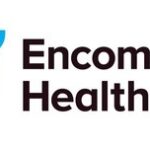 The Agency for Healthcare Research and Quality (AHRQ), part of the U.S. Department of Health & Human Services, has reported that a recent systematic review identified more than 40 definitions of the term "care coordination” and found there is no clear consensus.
The Agency for Healthcare Research and Quality (AHRQ), part of the U.S. Department of Health & Human Services, has reported that a recent systematic review identified more than 40 definitions of the term "care coordination” and found there is no clear consensus.
While the agency found “care coordination” means different things to different people, it was able to identify three distinct perspectives: those of the patient and family, the healthcare professional and the system delivering the care.
As a certified breast care health navigator at Holy Cross Hospital in Fort Lauderdale, I see all three viewpoints and it is my job to bring them together to focus on the delivery of quality care.
Patient/Family Perspective
AHRQ notes that patients and their families see success and experience failures particularly when services transition between healthcare entities.
My goal is to ensure each patient knows she is being taken care of by a team. I first meet the patient after she has received a positive biopsy for breast cancer. I talk with her and give her published information on what to expect as she participates in our breast clinic.
In a multidisciplinary approach, the breast clinic coordinates the patient’s care with physical examinations and meetings with oncologists, radiation oncologists, nutritionists, social workers and genetic counselors.
As that care is coordinated, I am the point person patients can turn to with questions and to facilitate next steps. In other words, they don’t know what to do or where to go without me.
In addition to making prompt appointments for them, I can provide information on support groups, similar cases, tests, trials and area programs. Collaborating with the social workers, I can identify resources for financial assistance, medication needs, home healthcare, insurance issues, transportation and other concerns.
I have been in healthcare since I was 16 years old and, upon becoming a patient navigator, I was surprised by the shear amount of gratitude patients showered upon me. A cancer diagnosis and all that follows can be overwhelming and when someone has a point person to guide them, they become calm and can smile.
Healthcare Professionals Perspective
Health care professionals, AHRQ reported, described failures in care coordination when the patient is sent to the “wrong” place, has a poor health outcome as a result of a handoff or if they, themselves, have to expend unreasonable energies to coordinate care.
The most import reason to have patient navigators with breast cancer patients is that we expedite the process of getting the patient seen and through the system as fast as possible.
By moving quickly from diagnosis to surgery, to chemo or pills, such as tamoxifen, we put all the pieces together and get the doctors on the same page. All the while, we explain it step-by-step to the patient and follow through with the care team.
System Representative Perspective
AHRQ states that the system of care, such as an ACO, will perceive failures from adverse patient outcomes due to fragmented care as well as from poor coordination of care that affects its financial performance.
Patient navigators work to ensure patients stay within the system and we make sure they follow up with the doctors within our system. For example, when patients seek a second opinion after receiving a biopsy at another facility, I offer to get their slides and upload their discs so that we have them in one place. We will work outside our system if the patient prefers, but most will stay within the system.
The saying goes, “We cannot direct the wind but we can adjust the sails.” That is true for patients battling cancer and every journey needs a skilled navigator to chart the course.
























